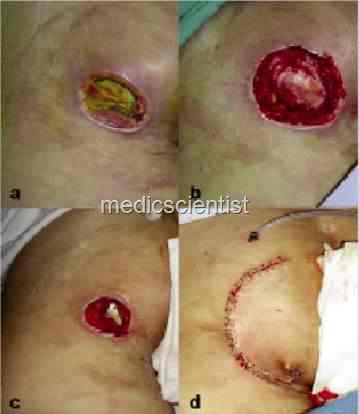Article Contents ::
All about Bacterial Infections Caused by PSEUDOMONAS SPECIES
- Gram–Negative PSEUDOMONAS SPECIES with diagnosis Treatment Signs and symptoms
INFECTIONS DUE TO PSEUDOMONAS SPECIES
Gram–Negative Losing the crystal violet stain and taking the color of the red counterstain in Gram’s method of staining, a primary characteristic of certain microorganisms
 |
| Bacterial Infections Caused byGram–Negative PSEUDOMONAS SPECIES |
- PSEUDOMONAS SPECIES gram-negative, aerobic, motile bacilli with polar flagella.
- Most are saprophytic, living in soil and decomposing organic matter.
- Some produce blue and yellow pigments.
- Pseudomonas infect the wounds created in diabetes and other open wounds,
- Pseudomonas is the most common bacteria present in maximum infections, in general, it infect the wound’s created by surgical , or traumatic injury or any open wound made by anything.
- Pseudomonas species are Gram-negative free-living opportunistic pathogens. The commonest human pathogen in this group is P. aeruginosa.
| P. aeruginosa infects , dermatitis, surgical wounds, sites, cancer lesions |
- It produces blue-green pigment pyocyanin which helps to identify the organism.
- P. aeruginosa infects burns, dermatitis, surgical wounds, catheter sites, cancer lesions, diabetic lesions etc.
Pseudomonasaeruginosa :
- A species that produces a distinctive blue-green pigment, grows readily in water, and may cause life-threatening infections in humans, urinary tract infections, including nosocomial pneumonia,and sepsis.
- It may also cause malignant otitis externa, folliculitis, and skin infections in patients who have suffered burns.
| Gram–Negative PSEUDOMONAS SPECIES |
Treatment of PSEUDOMONAS SPECIES
- in Pseudomonas treatment we have to use broad spectrum antibiotics,
- Piperacillin / Tazobactam,
- Ticarcillin / Clavulanate,
- Ceftazidime,
- Cefoperazone,
- Cefipime,
- Imipenem,
- Gentamycin,
- Amikacin,
- Ciprofloxacin,
- Levofloxacin.

